![]() Fishing the Rivers & Becks
Fishing the Rivers & Becks
![]()
I was looking at the YTAA website and realised that a few things have changed since I wrote the Hints and Tips article in 2016 so thought it was about time to add some more information as an addendum to my earlier suggestions. As before these are things that I use or things that I do that work for me while I am fishing our various becks and rivers, they are not definitive or hard and fast rules, I do not profess to be an expert, I never stop learning, so these are just some ideas you may find useful.
Rods
I have added new rods to my beck fishing inventory. First up I got one of the Shakespeare Agility Rise 6’ #3 carbon fibre 4 piece rods. You can get these for well under £50 and they are a great little rod and ideal for most of the fishing you will come across on YTAA running water. If you are thinking of trying beck fishing but don’t have a short rod you could do a lot worse than invest in one of these. There is also good spare parts availability through “KP Spares”.
My second new rod as those of you who read the diary will know is a Hardy Glass “The Aln” – a two piece 5’ #2 Fibreglass rod, that I saw being used to great effect when hosting a couple of Wild Trout Trust Auction winners. This is a very light rod with a delightful soft action but still good for roll casting and very accurate. I got mine new on EBay and although they aren’t made any more there are still a few new ones around, but they are scarce and won’t be cheap but they are a great little rod to use in the very tightest and most overgrown situations.
The third new rod, which again you will have seen stories about on recent Kingfisher Diaries, is a Rawson S-Glass 6’ #3 custom built and bought as a (very generous) present from my fishing buddy. I was concerned it might be hard to get used to a 6 foot rod on the becks after using both carbon and fibreglass 5 foot rods, but it is extremely good. I don’t notice the extra foot of length in any overgrown situations so far and it has lovely soft action and roll casts beautifully as well. It will be my first choice for many happy outings.
Reels
In that last hints and Tips I said I was searching for another Newtrad F3 #3/4 reel, I eventually got one on EBay USA and it has already seen a lot of use along with the others giving me a choice of DT2 or DT3 Lines. These little Japanese reels are very light and ideal for short rods and beck type fishing All three of mine have already seen a lot of use and I have been looking for another and I have just got hold of another one from EBay Australia. As I said before, any light reel will do, something that weighs less than 120 grams will be fine.
Fly Lines
I still prefer double taper floating lines for streams and rivers as you can get more use by reversing the line when one taper wears and starts sinking. But I have also got a couple of Snowbee Thistledown lines having been shown them by another YTAA member. These are a clever weight forward lines rated for rods between #2 and #5 so I could use them on any of my #2 and #3 rods but I also use them on longer rods for rivers and lakes in Wales, Scotland, and Ireland and at Stearsby with rods rated up to #5. They seem quite good.

When I got my Hardy Glass rod I invested in a Cortland Sylk DT2F, they claim it is designed to work with the slower casting action that you get with rods made in fibreglass and built cane. It works well with the Hardy Aln and I will probably get a DT3 version to work with the Rawson. I have also been trying to get a Barrio Lines “Mallard” DT2 and DT3, they have a reputation as good small stream lines but they have been out of stock during the Corona Lockdown and I am waiting for them to get back to me. From what I have heard they will work with the sort of Beck Fishing that YTAA have available.
One trick I have recently adopted with Double Taper lines for beck use is to cut the line in half. This may sound drastic but it works on several levels. First it saves a bit of weight on the reel, though this is balanced by needing a bit more backing to load the reel properly. Secondly it does mean that the taper that is not in use can be stored clean and dry and will not be getting wet and dirty or developing” memory” by being on the reel. The other thing of course for beck fishing it is rare to need to cast more than 8-10 yards and half a double taper line is usually around 15 yards so you still have plenty of line (and backing) should you ever hook a fish that takes line.
Nets
I have found that scrambling through brambles etc. on overgrown streams does lead to nets snagging causing wear and tear. For a couple of years I have been using an alloy framed nets from Boyes (!), sounds odd but at under £7 they work well, but still get caught on things. So I have recently acquired a Mclean Folding Travel Weigh Net. Made in New Zealand they are basically a fine stainless steel frame that twists down to tiny 5 inch diameter pack that goes into a belt holster where it is out of the way of brambles and always ready for action. The net springs out fully open when you pull it out of the holster. These nets are a quality product but at £90 are the opposite end of the scale to the Boyes net. Mine has already proved its worth on the becks, though I am unlikely to make full use of the built in weighing scale as we don’t get too many trout up to 14lbs in our becks!
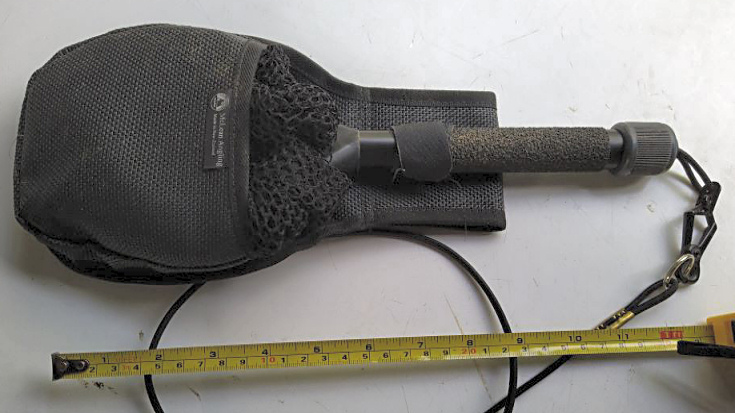
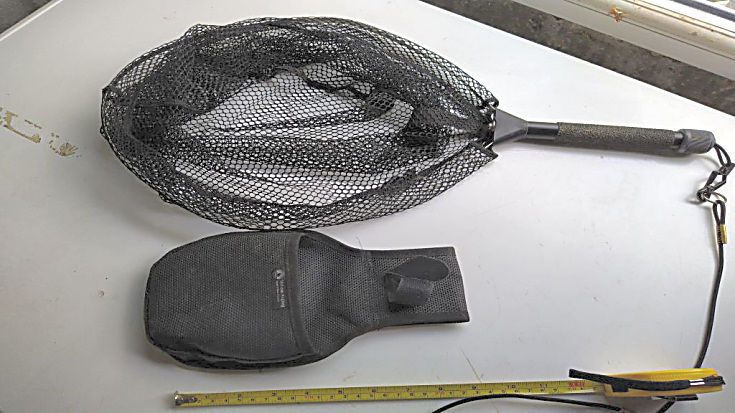
Casts
What I said in the original Hints and Tips is still true, for beck fishing your cast needs to be about the same length as the rod your using, any more and the fly line doesn’t come into play. I still use 3 lengths of line knotted together, usually Drennan Sub Surface 6lb attached to the fly line, 4lb Drennan next then using one of the silver tippet rings attach 3lb Drennan or Silstar Match Team as a tippet – I used the 3lb Silstar version at first but I mostly use the 4.6lb as it seems to have slightly better abrasion resistance and at 0.14mm is still thinner diameter than the 4lb Drennan (0.20mm) and so it makes up a tapered cast that turns over nicely.
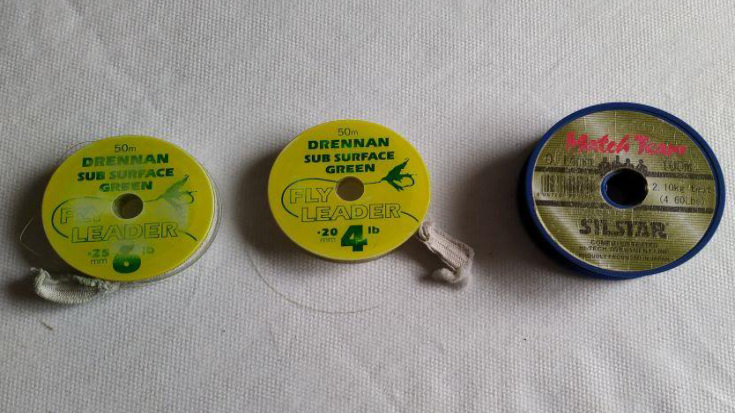
Klink and Dink
New Zealand Style Nymphing
My first love is always dry fly, there is nothing to beat dropping a dry fly in the right spot and getting a trout to take it, but Klink and Dink is also fun, especially if fish really aren’t bothered about taking dries. I frequently change between the two techniques as I work my way upstream between different runs and pools so I have started to use the Ethafoam carp rig holders to hold pre-tied Klink and Dink rigs. These allow me to quickly change to a nymph by simply cutting of my dry fly tippet above the tippet ring and tying the 4lb Drennan to the eye of the Wulf fly I use as the “Klink”. The goldhead is tied to Drennan Sub Surface 3 or 4lb (or sometimes the Silstar Match Team 4.6 lb) ready to go. I have several rigs made up with different lengths between the goldhead and the Wulf varying from 18 inches to over three feet if I need to go deep and remember a lot of pools on our becks are much more than 3 feet deep. Changing back to my dry fly means just snipping off the line to the Klink and tying the Drennan back to the tippet ring.
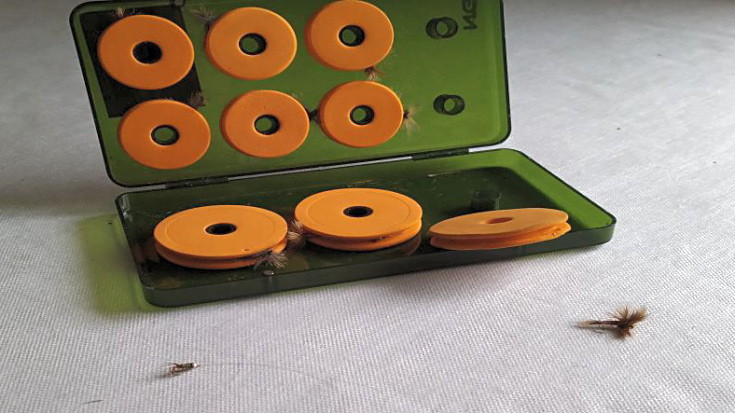
Flies
I still find I use Adams Parachute flies a lot, the larger sizes work during mayfly time and smaller sizes work most other times. I also use an F-Fly in sizes 14-18 quite a lot and a friend tied me some size 24s! On Klink and Dink I use a goldhead “special” that I tie, it’s not really special just a scruffy looking pheasant tail with an orange abdomen that does seem to work well.
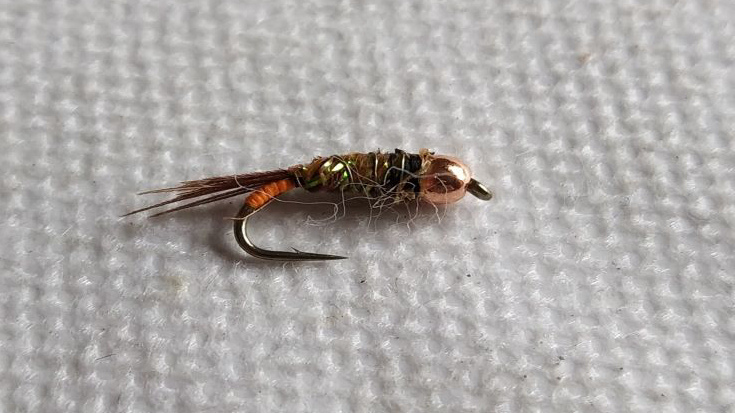
Frogs Fanny /
Hunts Original Floatant
This is something I saw used by a WTT auction winner. It is really 'Hydrophobic Fumed Silica', a white powder that is dusted and rubbed into the fly that keeps it floating. Its funny stuff but works, the branded versions are expensive, circa £7 for a small bottle. My suggestion would be by a branded bottle so you get the little brush that comes in the lid but then buy in bulk off the internet quite cheaply to refill your bottle (I split the smallest quantity you can purchase with my Scottish fishing buddy and we have each got enough for about the next 20 years fishing and it was still half the price of just a few of the branded bottles!). There is discussion whether the coating which is white/light grey when rubbed into the fly changes the colour of the fly but the fish don’t seem to mind…
Back Pack
For years I used a small fishing bag to carry essentials when I was fishing but a couple of years ago I switched to an Airflo Backpack. The advantage is that as well as the rucksack type back pocket, it has waistcoat type front and inside pockets, loops for zingers, forceps, snippers, etc. so you can carry everything you need for a day’s fishing. The big disadvantage of the backpack is you can carry everything you don’t need as well…. So unless you want to be weighed down by a lot of kit you need to be careful to only pack on what you really need …. I am probably not that careful!

Fishing The Becks
What I said before still stands, always try the tail of a pool or run first (always ask yourself am I standing where I should be fishing!). I have had lots of trout from the shallowest of water which barely covers their backs. You will find the fly drags quickly at the tail of a run so if you can get a sidecast or let the line lie over a rock or something so it doesn’t get whipped away by the current, that will give a second or two more for the fish to see and take your fly, trust me it works!
What I’ve said before about watching for your back cast is still true and whenever possible minimise the number of backcasts to reduce the opportunity of getting a tree or bush. Roll cast as necessary, but when you do, frequently check your cast and tippet for “wind knots” you can guarantee your cast will break on a good fish if you don’t check frequently.
One thing that might not seem so obvious is when fishing in tight spaces you may need to be tucked well into the bank or partly hidden behind reeds, a bush or a tree to target good size fish. Before you cast, you need think how you will play a good fish once it is hooked - will you need to step out from cover or wade across the stream to a different position to give you a better chance of holding the fish clear of tree roots, sunken logs etc.? Is there a root or boulder or trip hazard in your way if you move? If you plan what you may need to do it will help when you actually have a lively fish on the business end of the line.
Finally best tip of all, remember this is supposed to be fun, so don’t take it too seriously just enjoy your fishing.